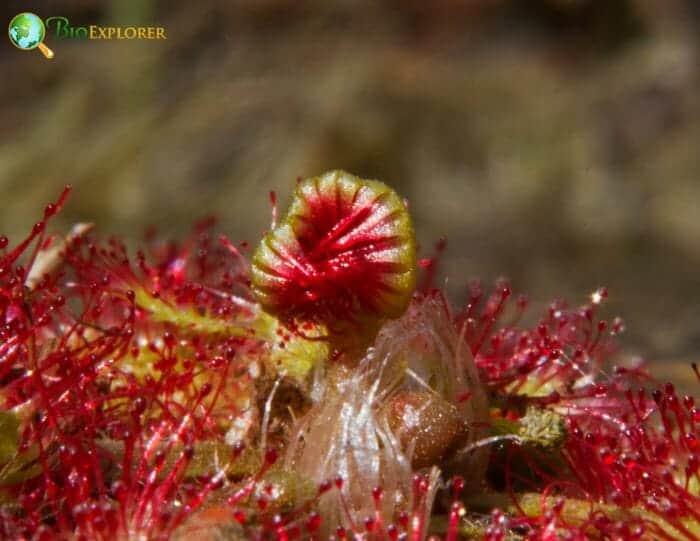
Drosera rotundifolia, common sundew or round-leaved sundew, is a carnivorous plant that grows in fens, marshes, and swamps.

As one of the most widely grown sundew species, it has a circumboreal distribution and occurs throughout northern Europe, Siberia, northern North America, Japan, and Korea. The Drosera genus includes about 152 species[1] of carnivorous plants in the Droseraceae family.

The leaves of this plant are arranged in a basal rosette. The hairy, narrow petioles, 1.3 to 5.0 inches long, have round blades 4 to 10 millimeters (0.16 to 0.39 inches).

The top of the leaf blade is densely clad with reddish glandular hairs that exude a gluey mucilage. A typical round-leaved sundew plant is about 3 to 5 centimeters (1.2 to 2.0 inches) in diameter and has an inflorescence that is 5 to 25 centimeters (2.0 to 9.8 inches) high.

The flowers grow on one side of a single, thin, glabrous stem extending from the leaf rosette center. The five-petaled flowers are pink or white in color and produce seeds 1.0 to 1.5 millimeters (0.039 to 0.059 inches).












Plant fascinates me, its sticky leaves show nature’s clever survival tricks.